My old post on the "races" (more accurate to say species) of my fantasy setting is a bit outdated at this point. This time I'm going into better depth, providing picture inspiration, and such.
First I gotta get some facts out about the setting.
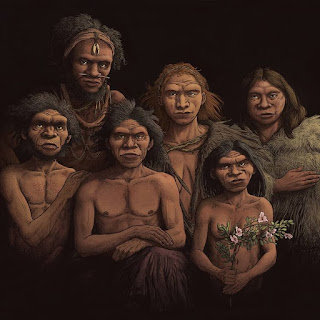 |
| Various Human Species, by Ettore Mazza |
Important Bits
Technology was "discovered" much earlier in our evolutionary line in this setting. Stone tools and fire are older than bipedalism (cooking too), and Agriculture started to crop up about when Bipedalism started to become more common.
This is different than the real world, but not to the levels of unbelievability I think.
Metallurgy shows up just about when the genus "homo" (the Kin) splinter away from their fellow bipedal primates, but seems to get lost and rediscovered several times.
"Higher" technology crops up at a few points, before some cataclysm seems to knock technology back to stone tools. No one knows why exactly.
Wars are quite rare, though territorial disputes and violence aren't uncommon. "State" societies are the exception, not the norm.
Rather than cities people have what we would call "Proto-Cities," settlements with both urban and rural features, often lacking something we think of when we hear "cities" (such as roads or centralized planning).
Current technological level fairly anachronistic. Nautical travel is fairly advanced, but otherwise weapons and metalworking are "copper age" at best, late stone age at most. Clothing (when it is worn) is similarly anachronistic. Fabrics are fairly advanced and used for clothing and sails, but people frequently use hide and fur as well. The regular fluctuations in technology across history have led to this anachronism, though admittedly its not that unrealistic.
The world is animistic, and this seeps into all religions as a result.
Alright. With that bit out of the way. Lets talk species.
The Kin
The lines between the Kin and other people of the world is blurry at best. However most agree that the Kin are all capable of having children with each other. These children may have health issues and infertility, however this does not occur universally. The origins of at least one of the Kin is a result of continuous hybridization like this.
Human = Kin. These are all (inspired by) members of the Genus "Homo."
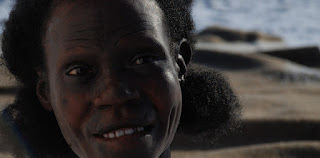 |
| Homo Sapiens, By The Kennis Brothers |
Youngfolk: Tall and frequently slender folk of the southern continent. Dark skin and complexion, though those that historically live in the norther regions of the continent trend towards more bronze complexions. Clever, though not beyond the realm of possibility for other species, and youthful in appearance. Tend towards nomadic hunter-gatherer lifestyles culturally, though River Valleys and contact with others have led to the development of significant sedentary cultures. Impulse control is higher than average for Kin as a whole.
 |
| Untitled, Probably a Neanderthal, By Tom Björklund |
Broadfolk: Strong, physically broad people of the northern continent and peninsula. Skin tones range from bronze to porcelain complexion. Highly observant and very very skilled hunters. Asocial compared to the youngfolk, forming tight-knit but smaller bands as part of larger cultures. Tend towards nomadic hunter-gathering but some eastern broadfolk have begun to cultivate domesticated plants. Cold resistant, but struggle in warmer climates.
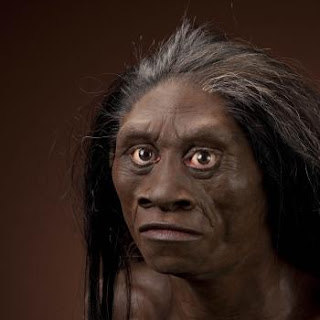 |
| Homo Floresiensis, By John Gurche. Why does nobody cite him for this specific statue? |
Smallfolk: Physically small people, but highly highly social. Towns are more like massive extended families, as are neighborhoods of urban Proto-Cities. The most urban societies are built by them, and their cultures are some of the only ones to have developed (somewhat) significant maritime power. The Cerulean Thalassocracy is mostly Smallfolk. Smallfolk also tend to avoid attempts at colonial power, preferring diplomatic arrangements over direct control or conquest. This is an extension of their highly social psychology, but Smallfolk "Empires" have existed in the past.
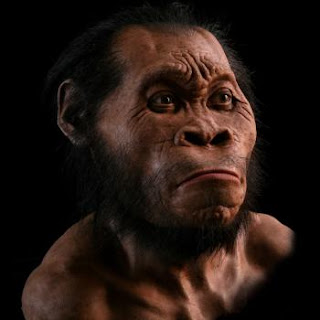 |
| Homo Naledi, By John Gurche |
Treefolk: Smaller than most, but not to the degree of the smallfolk. Able to walk, use stone tools and use fire like others, but are also adapted for arboreal movement. When not in settled villages they tend to weave temporary "nests" in the trees, much like other primates. The most distantly related of the Kin, able to trace their linage back to very near the beginning of the Kins existence.
 |
| Homo Erectus Female, Also by John Gurche. |
Elderfolk: Average in size for kin, not quite reaching the height of Youngfolk and definitely taller than the Smallfolk, dark of complexion and strange in their ways. The Elderfolk are a subspecies of the legendary First Wanderers who were the first of the Kin to step beyond the southern continent in significant capacity, and who built a society of incomprehensible tools and magic. While the Elderfolk have much less technology than their legendary predecessors, they do seem to be one step ahead of the curve compared to other cultures in general.
The Kith
Everyone else is grouped into the "Kith." While the Kin all have relatively the same body plan and statistics (mechanically only rerolling a stat and having a passive ability or two) the Kith significantly alter the playstyle of one who plays them. Kith are not guaranteed to be bipedal, able to speak, or able to make use of tools as effectively as other species. The only Kith species I'll put here is the Wildfolk, as I haven't gotten into much detail with the others as yet.
There are also the Underkin, a parallel genus to that of "Homo" that lives deep underground. I've figured out even less about them, and they deserve their own post.
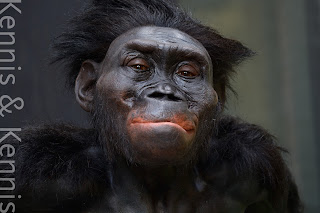 |
| Lucy, By the Kennis Brothers. An Australopithecus Afarensis |
Wildfolk: A collective term for a number of different bipedal, furred primates. Technically Homo Habilis is a member of this, though they are a human species irl, in the world of Kith and Kin the thing we use to distinguish between australopithecines and members of our genus is available to almost all primates (fire). Thus, Wildfolk are distinguished by their significant covering of body hair. The settled wildfolk there are tend towards simple agrarianism or herding, but a significant number of them are nomadic hunter-gatherers.
Yeah yeah yeah!
ReplyDeleteKin and Kith is a great way to break away from race/species.
ReplyDeleteAre they somehow destined to evolve into the vanilla fantasy folk of today (whether in game or in lore) or are they no more than rough analogues?
Rough analogs. Some cultures may end up resembling vanilla fantasy folk, but as a whole there is no 1:1 correlation between them. At least 3 of the above can count as "elves" for example.
Delete